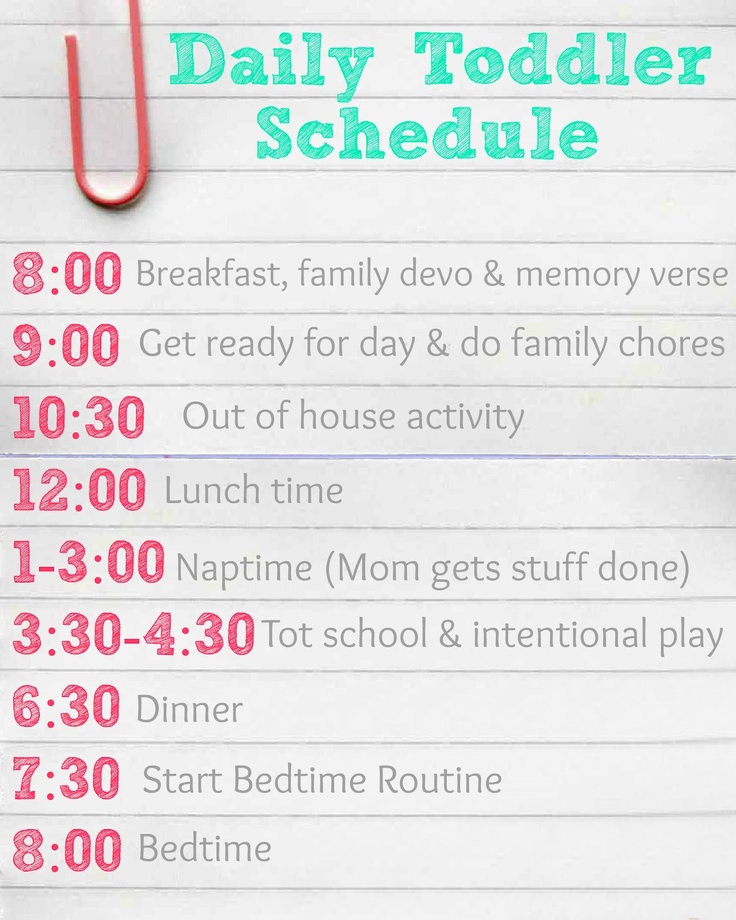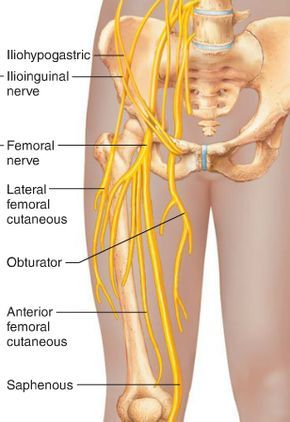Daily schedule for family
Routines for families: how & why they work
Routines: the basics
Family routines set out how families organise themselves to get things done, spend time together and have fun. Routines help family members know who should do what, when, in what order and how often.
Routines also let your children know what’s important to your family. For example, really special routines are sometimes called rituals. These can help strengthen your shared beliefs and values, and build a sense of belonging and togetherness in your family.
Why routines are good for children
Routines can be good for children for several reasons.
Safety, belonging and relationships
Routines can be part of an organised and predictable home environment, which helps children and teenagers feel safe, secure and looked after. And a predictable family life can also help children cope during development changes like puberty, or life events like the birth of a new child, divorce, illness or a house move.
Also, routines built around having fun or spending time together foster a sense of belonging and strengthen family relationships. For example, reading a story together before bed, sharing regular family meals or having a kick with your child before soccer practice can be special time for you and your child.
Skills and responsibility
Having chores as part of family routines helps children and teenagers develop a sense of responsibility and some basic skills like time management. These are skills children can use for life.
And when children can do their parts of the routine with less help or supervision from you, it also helps them become more independent.
Healthy habits
Routines can teach younger children healthy habits, like brushing their teeth, taking medicine regularly, exercising, or washing their hands after using the toilet.
This means that routines can be good for children’s health. For example, children who wash their hands more regularly might be less likely to get colds and other common illnesses.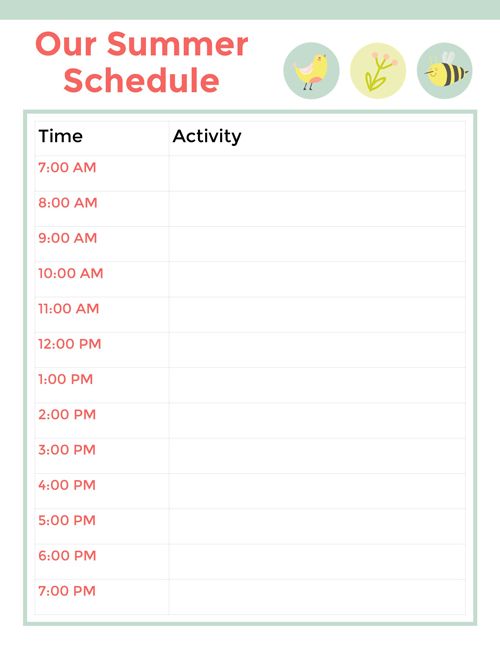
Also, routines can reduce stress, and lower stress is good for children’s immune systems.
Daily routines help set our body clocks too. For example, bedtime routines help children’s bodies ‘know’ when it’s time to sleep. This can be a big help when children reach adolescence and their body clocks start to change.
Why routines are good for parents
Routines take some effort to create. But once you’ve set them up, they have many benefits:
- When life is busy, routines can help you feel more organised and in control, which lowers your stress.
- Regular and consistent routines can help you feel like you’re doing a good job as a parent.
- Routines help your family get through your daily tasks more efficiently and free up time for other things.
- Routines often mean you don’t have to sort out disputes and make decisions. For example, if Sunday night is pizza night, no-one needs to argue about what’s for dinner.
It can be easy to overschedule family life.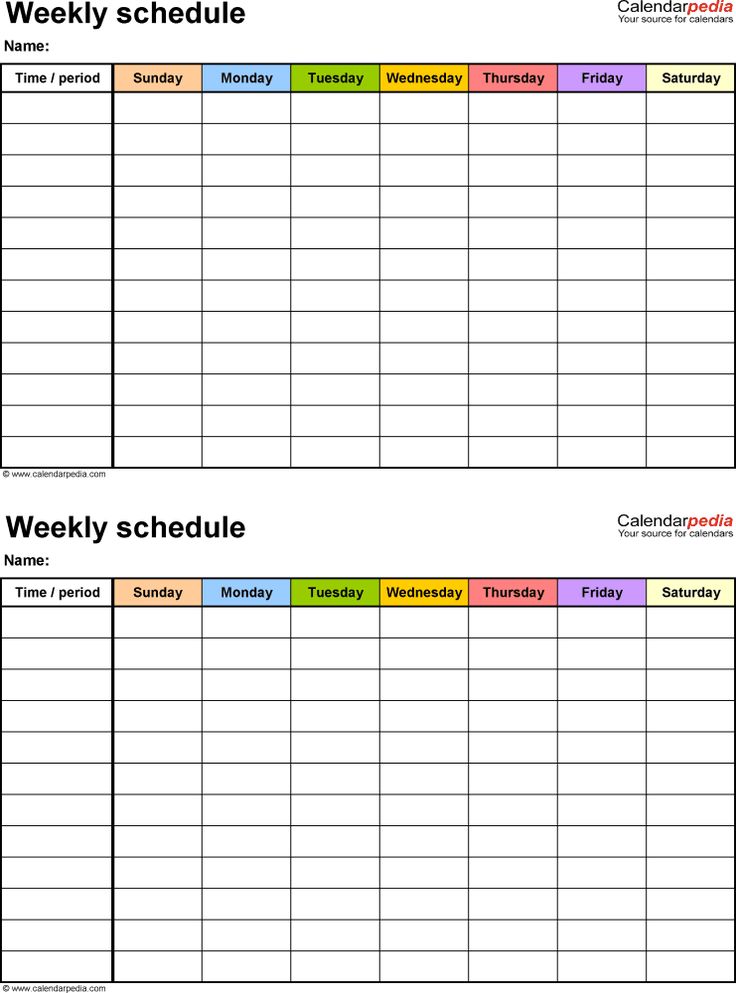 Routines have many benefits, but it’s also good for children and parents to have free time to play, relax or be creative.
Routines have many benefits, but it’s also good for children and parents to have free time to play, relax or be creative.
What makes a good daily routine?
A good routine is one that suits your family. It also has three key features.
Well planned
In a good routine, everyone understands their roles, knows what they need to do and sees their roles as reasonable and fair. For example, your children know that they take turns with washing up and drying up each night after dinner. As children get older, they can have a say in planning routines.
Regular
Good routines become part of everyday family life. For example, you might all look forward to Sunday night barbecues with your children’s grandparents.
Predictable
In a good routine, things happen in the same order each time. Everyone knows what to expect for the day. For example, you always wash school uniforms on the weekend, so you know they’ll be ready for Monday morning.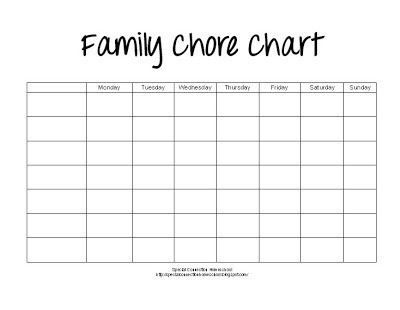
Routines for children with disabilities can be a big help. They can be even more important for children who find it hard to understand or cope with change.
Toddlers and preschoolers: ideas for daily routines
For toddlers and preschoolers, you could have routines for:
- getting ready in the morning
- eating meals
- spending time playing and talking together
- reading books or telling stories
- having quiet time and going to bed at night.
You could also have weekly routines for playdates or playgroup, trips to the park or visits to extended family. Your child will probably look forward to these special events each week.
School-age children: ideas for daily routines
For school-age children, you could have routines for:
- getting ready in the morning and going to bed at night
- doing after-school activities like hobbies or sport
- doing chores – for example, setting the dinner table, unpacking the dishwasher, helping with the laundry, or caring for pets
- doing homework.
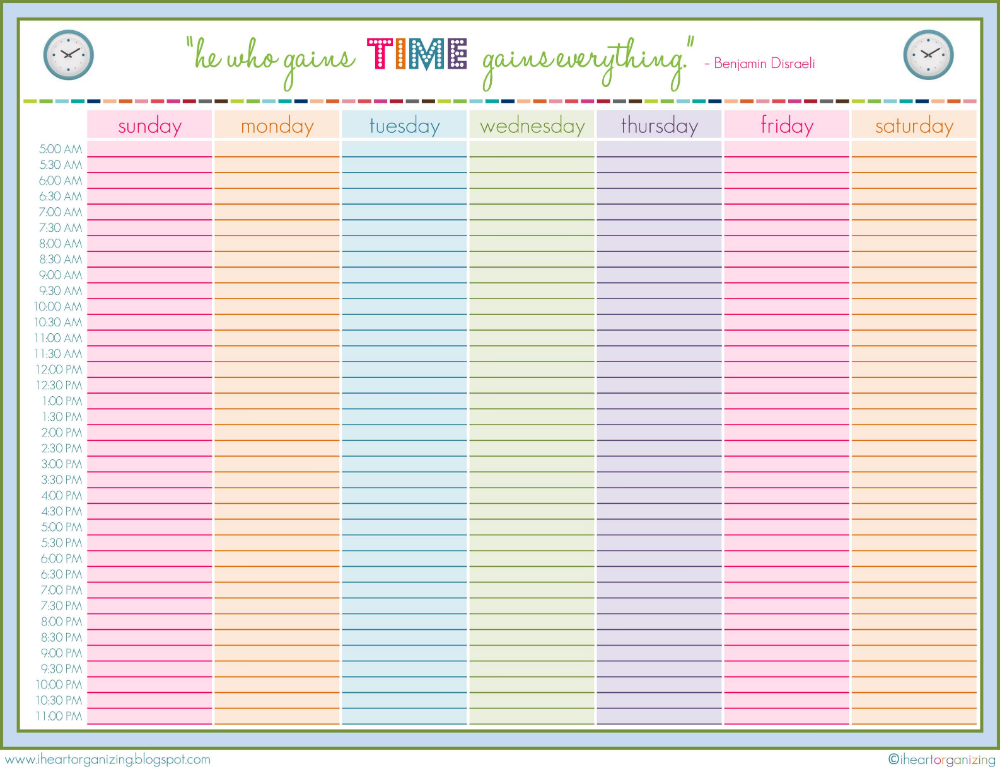
For school-age children, you might be more flexible with routines during school holidays. You might let your child sleep in a bit later, have extra playdates with their friends or spend a little more time playing video games.
Teenagers: ideas for daily routines
For teenagers, you could have routines for:
- getting ready in the morning or winding down after coming home from school
- doing laundry or other chores like making beds and cleaning rooms
- doing homework
- doing after-school activities, including hobbies or sport
- spending time with family
- relaxing before bed.
Older children and teenagers might grow out of or start to challenge some routines. You’ll probably need to be flexible and adapt routines as your children get older. For example, you might need to adjust bedtimes or chores.
How to Create a Daily Schedule for Your Family When You're Cooped Up
This post may contain some affiliate links for your convenience (which means that, at no cost to you, if you make a purchase after clicking a link I will earn a small commission). Read my full disclosure policy
Read my full disclosure policy
The world feels pretty crazy right now. And for many of us, our daily schedules are completely upended. Schools are closed, businesses are closed, and many of us find ourselves stuck at home amidst a wave of uncertainty.
But one of the best ways you can feel more in control and at more peace during this time is to create the right daily schedule for your family. Because when done right, routines and schedules can feel like a lifeline when you’re drowning.
But the key here is THE RIGHT schedule.
Trying to keep the wrong schedule—especially one that’s too rigid—will just make you feel like a failure. And the reality is that a lot of the schedules floating around right now aren’t going to work for many of us.
I’ve seen brightly colored schedules making the rounds which at first glance, seem awesome. But for those of us who have to work from home or who don’t feel up to playing the part of camp counselor, they can feel impossible.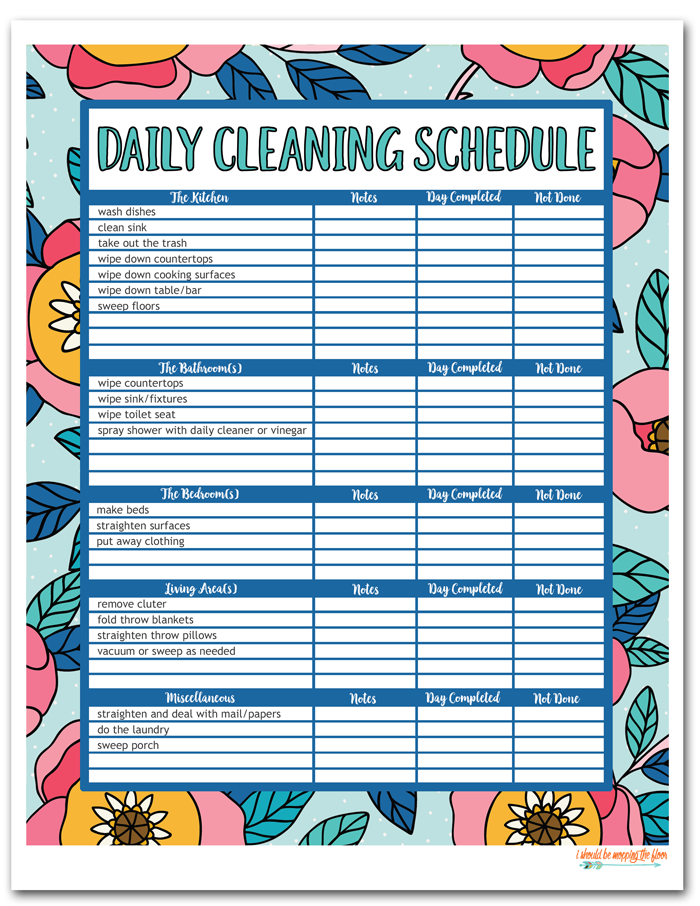
In this post, you’re going to to learn how to create a realistic schedule for your family. One that keeps you sane and helps you on the road to your goals.
(BTW, you’ll find the link to the Microsoft Word daily schedule template at the bottom of this post)
Don’t feel like reading? Just watch the video. Plus, I show you how to use the template.
DAILY SCHEDULES SHOULD GIVE US FREEDOMHere’s the way I see it: making a schedule is like creating the architecture of our day. Every day, we have this empty land (our time) that we can fill. We can wander aimlessly, or we can build something that helps us accomplish our goals and provides flexibility and comfort.
A great schedule is like building a comfortable house on that land. A house that gives protection and room to move.
On the other hand, scheduling every second is like building a tunnel through your day.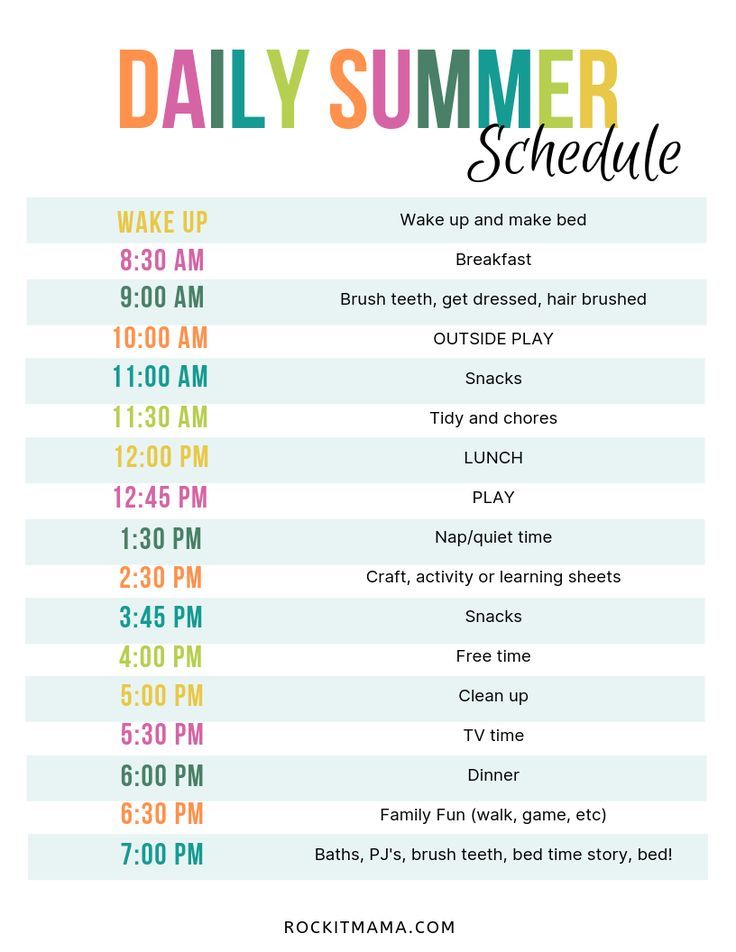 You might be able to cover a lot of ground in that tunnel, but you might feel claustrophobic, limited, and a little insane.
You might be able to cover a lot of ground in that tunnel, but you might feel claustrophobic, limited, and a little insane.
Schedules can be so rigid and restrictive that they drive us crazy and set us up for failure. Or they can simply be too unrealistic. Creating a schedule is not a time to be super idealistic.
Remember…
Parenthood + rigid/unrealistic schedules = Locking yourself in the bathroom
So with all that in mind, I want to go through the steps to create a workable and realistic family schedule for you during this time.
HOW TO CREATE A DAILY FAMILY SCHEDULE WHEN YOU’RE COOPED UP AT HOMEStep 1: List all the things you want to fit in your day. This includes sleep!This is just brainstorming, so write down everything you can think of. For example, this might include:
- Meal prep
- Meals
- Sleep
- Kid’s activities
- Exercise
- Academic time
- Self Care & relaxation (Super important right now.
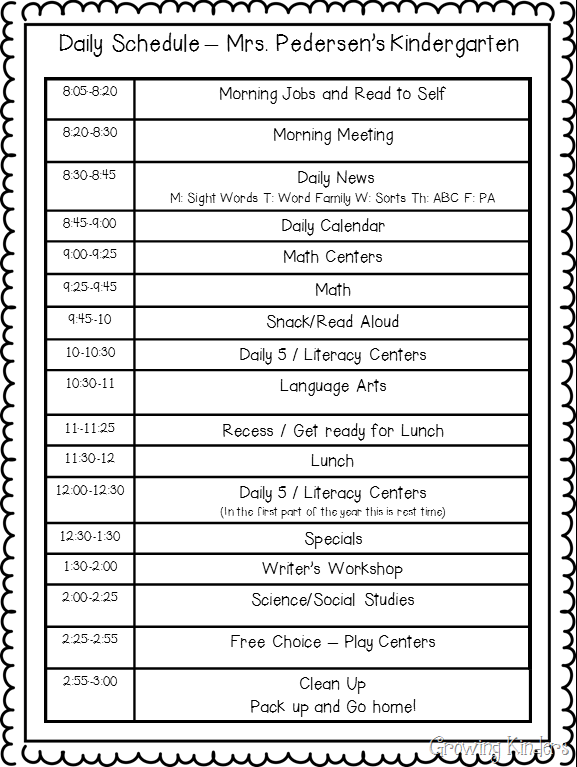 How can you show up for your kids, if you’re not well?)
How can you show up for your kids, if you’re not well?) - Cleaning & chores
- Working from home
- Relax with partner
- Family time
- Watching your favorite TV show
Don’t judge yourself here. Just list the kinds of things that show up in your day.
RELATED: A Simple Cleaning Schedule You Can Stick to
GET THE FREE DAILY PLANNER
Step 2: Prioritize that list.You can do anything…but you can’t do everything.
Which is why you need to figure out what are the most important things on your list. Take a step back and think about what is most important to you. What tasks are going to ultimately impact your health and happiness?
And now, I know you’re all thinking: of course, my kids are the most important. Time to jump into the role of camp counselor/home school extraordinaire.
Hold on. Putting your kids first DOES NOT mean a day full of reading, math, science, structured crafts, and learning about Michelangelo.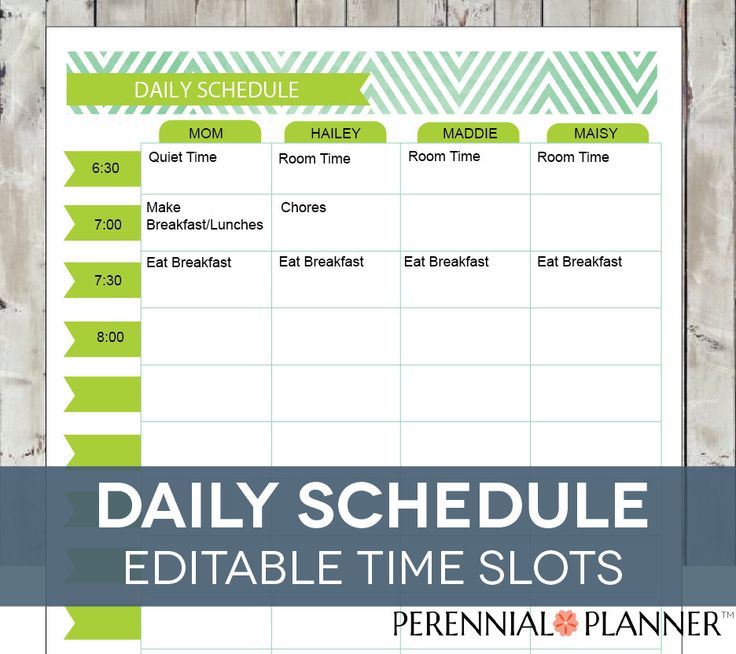 I mean, if that gives you life, go for it.
I mean, if that gives you life, go for it.
But if you just started hyperventilating thinking about that, know that’s definitely not necessary to actually put your kids first.
For me, putting my kids first means that I prioritize my self care and sleep. It’s going on a morning run and taking care of myself physically and mentally so that I can show up for my kids in the right way. So I have the patience and energy to give them what they need.
It means giving them chores so they help out, learn responsibility, and know they’re essential to our home. (At this moment, chores are more important than math.)
It’s also making sure I fulfill my responsibilities in my work so that I can provide the income necessary to maintain our modest lifestyle. This also means lowering my expectations for what I can accomplish work wise. Because I want my office door to be open to my kids while I work (for the most part).
So as you prioritize, think about what’s really important and the outcomes you want.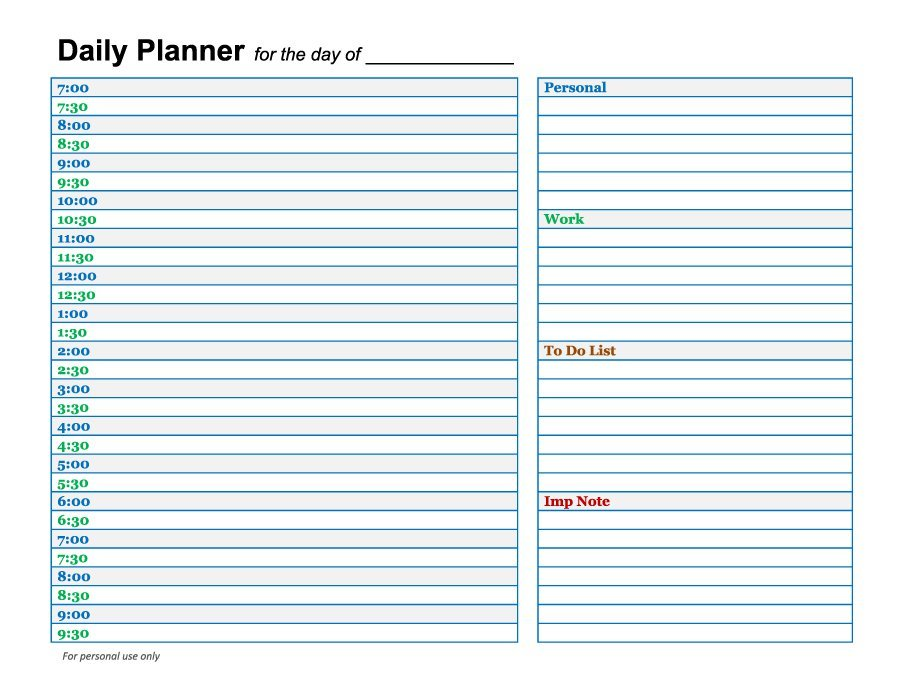
And something to remember: kids don’t need everything scheduled. Yes, they need routines. But research shows that they NEED free play. Unstructured time with out any academic pressures.
Personally, we just bought a TON of legos and lego mats that are currently keep our kids occupied for hours. Here are some more awesome suggestions for toys and activities that provide kids unstructured free play.
RELATED: How to Keep Kids Busy so You Can Get Stuff Done
Step 3: Start scheduling the top priorities and INCLUDE buffer & downtimeStart working your most important tasks (ahem, sleep and self care) into your schedule and work your way through your list. And plan space between your tasks.
As a parent, you need buffers. Which is the number 1 reason restrictive schedules are recipes for disaster. Life happens.
I mean, as a parent, you have those moments where you announce that it’s time to put on shoes and get in the car.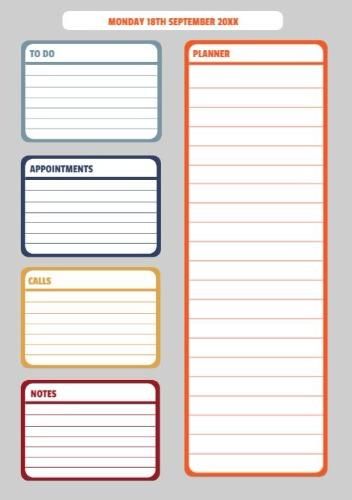 And then it proceeds to take 45 minutes to actually get shoes on everyone and get bodies in the car.
And then it proceeds to take 45 minutes to actually get shoes on everyone and get bodies in the car.
Someone’s gonna pee their pants, lose their shoes, or have a have an epic meltdown. This is just real life that doesn’t always make its way onto Instagram. Your schedule should plan for that.
Step 4: Eliminate the unimportantNow in this process, you may find that you realistically don’t have room in your day to get everything done AND keep a buffer.
Resist the urge to cram and cut down the essentials in order to accommodate the unimportant. That’s why you prioritized in step 2. So you make sure you do the most important and know what stuff can go by the wayside.
(At least for right now…)
Step 5: Create a schedule using the temple provided (Optional).Personally, I love to create our schedules in Word, print them out, laminate, and post them where everyone can see. That way the schedule becomes routine.
To help you create your own schedule, I’ve created a little daily schedule template in Word that you are welcome to use and edit.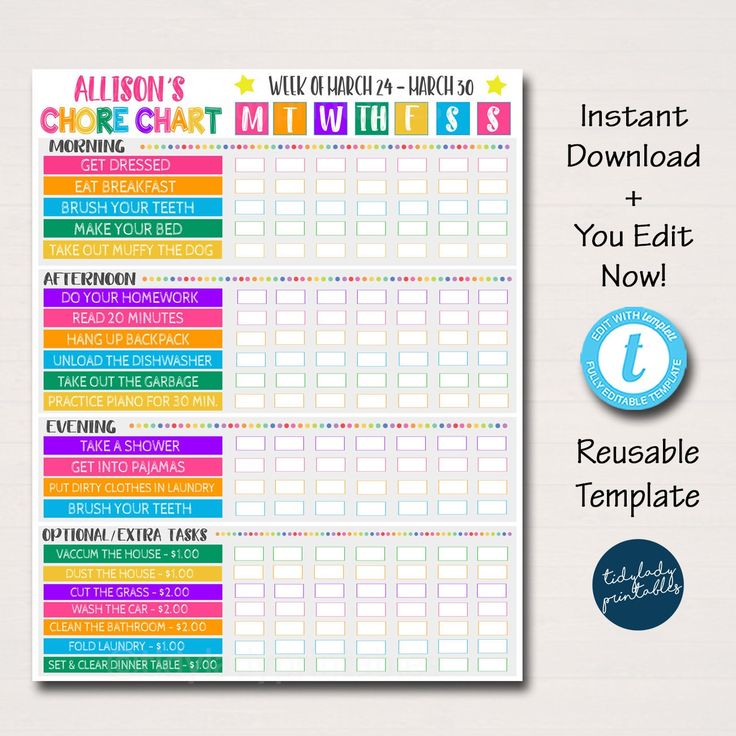 The video at the top of this post explains how to edit the schedule to fit your needs.
The video at the top of this post explains how to edit the schedule to fit your needs.
Feel free to add or delete columns, merge cells, and use color fills to create a schedule that makes you happy.
You can download that file right here: Family Daily Schedule Template Docx
Here’s how our schedule looks right bow:
USE THE TEMPLATE TO CREATE YOUR OWN DAILY FAMILY SCHEDULEAs you create your family schedule, remember that the most important thing right now is your health and well being and that of your family. If the thought of trying to create structures homeschool environment stresses you out, don’t do it.
The key is to find what worlds for you. If perfection is your standard, you’ll just end up disappointed.
One of my favorite quotes is about writers block. But I swear it applies to life in general: “ When faced with writer’s block, lower your standards and keep going.” (Sandra Tsing).
So lower your standards and prioritize what matters.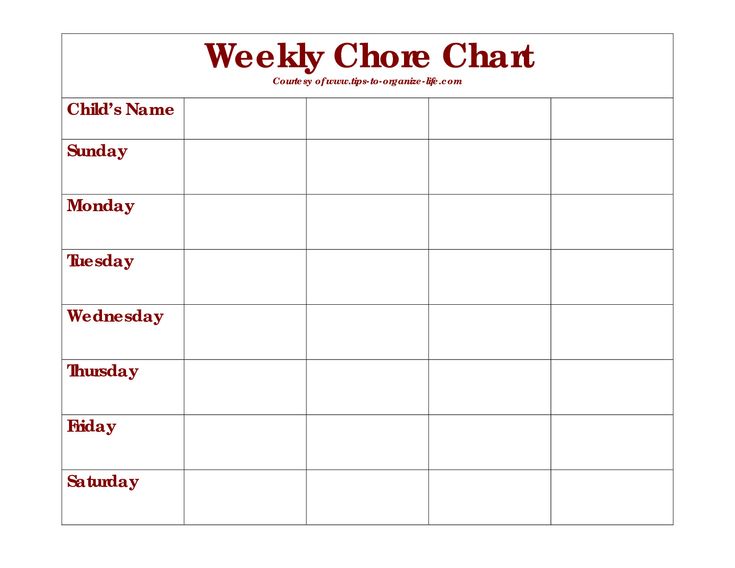
You’re going to get through this.
YOU MAY ALSO LIKE…
A Realistic Cleaning Schedule You Can Stick to
10 Simple Habits to Keep Your House Clean
13 Ways to Get Kids Excited About Chores
Lesson 1. The correct regime of the day
How to correctly compose the regime of the day is one of the most important topics of a healthy lifestyle. Everyone is faced with the need to allocate their time. Sometimes, as in the case of work, this is a necessity. Sometimes, for example, when planning the most productive pastime or vacation, this is expediency.
Proper daily routine includes the rational use of sleep, personal hygiene, nutrition, work, rest, sports and physical activity. Planning a daily routine and following it makes a person disciplined, develops organization and focus. As a result, a mode of life is also developed, in which the expenditure of time and energy on non-essential things is minimized.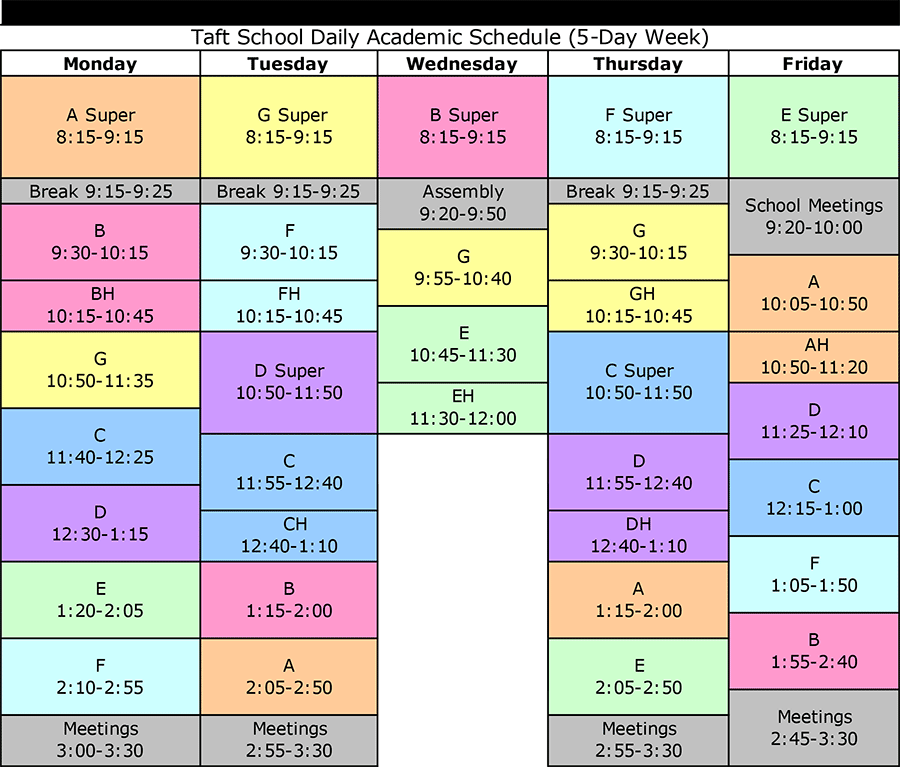
In this lesson, answers will be given to questions about the correct daily routine, the features of the influence of biological rhythms on the activity and efficiency of human activity, the main approaches and methods for compiling a daily routine for different people: men and women of different professions, adults, students and schoolchildren.
Contents:
- What is the daily routine
- Biological rhythms and daily routine
- Owls and larks
- Components of the daily routine
- How to plan your daily routine
- Verification test
What is the routine of the day
Let's start with the definition:
Daily routine is a well-thought-out schedule of actions for the day, planning time with the aim of its rational and most efficient distribution.
As mentioned above, the routine is of great importance for the self-discipline and organization of any person, and it is also important for many other applied aspects of our lives.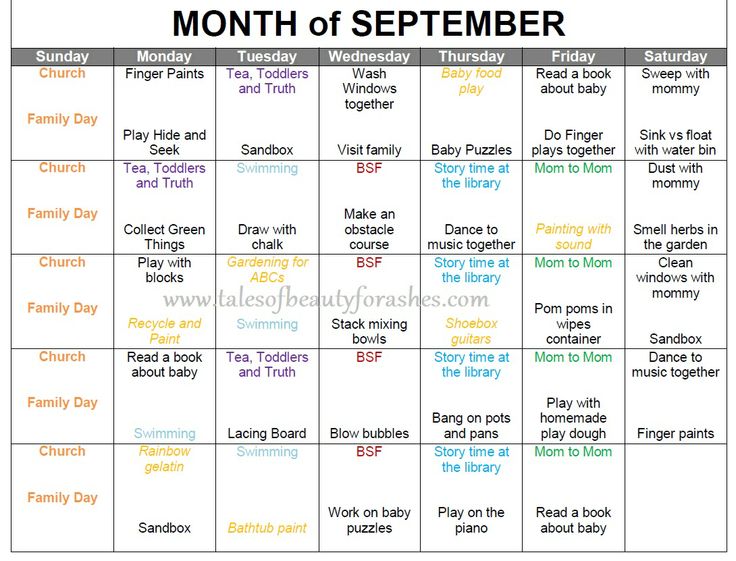 For example, the daily routine plays an important role in building training programs, compiling diets and organizing proper nutrition in general, choosing the most productive hours of our lives for work or creativity.
For example, the daily routine plays an important role in building training programs, compiling diets and organizing proper nutrition in general, choosing the most productive hours of our lives for work or creativity.
Mason Curry, in his book The Genius Routine: The Daily Routine of Great People, gives the following analogy to the daily routine:
we lack most of all, as well as willpower, self-discipline, optimism. An ordered routine is like a track along which mental forces move at a good pace…”
The daily routine is needed so that time does not take advantage of our absent-mindedness (see epigraph). Each person faced in his work haste, a sense of the amorphousness of time, confusion in personal and work affairs. We cannot always clearly tell how much time we spent on this or that activity, because we do not consider it necessary to constantly monitor the use of our time. However, it is the whole day's routine that helps to most intelligently and effectively allocate your time. In addition, without the skill of successfully planning your day, a person will not learn to make longer-term plans, especially since it is not so difficult to plan your daily schedule completely, after:
| ✔ | Day as the minimum unit for planning is most convenient due to easy visibility. |
| ✔ | If any attempt fails, you can rebuild and change the mode the next day. |
Let us also note the fact that the use of the epithet "correct" in relation to the daily routine is somewhat arbitrary. Individually for each person, the concept of the correct routine can be different and depend on many factors: work, habits, characteristics of the body. But, according to experts (psychologists and doctors), the physiological aspects of the functioning of the main life systems of people are identical [Wedemeyer G. A., 1996]. On the basis of this, it is possible to compile a universal regimen containing general recommendations that will suit everyone to one degree or another.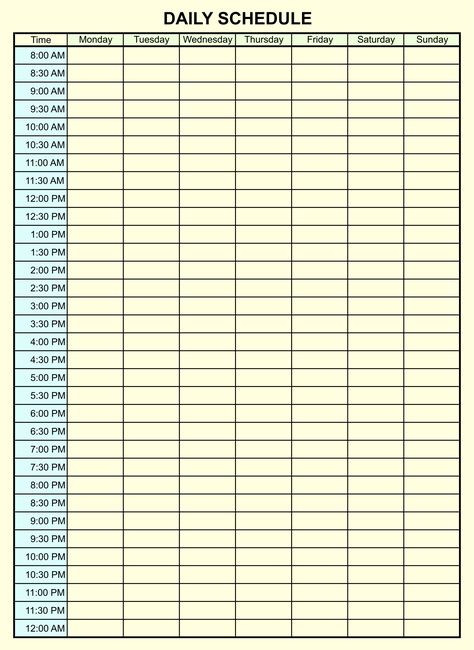 Based on the proposed recommendations, taking into account your individual needs, you can develop a daily routine that is best for you.
Based on the proposed recommendations, taking into account your individual needs, you can develop a daily routine that is best for you.
Biological rhythms and daily routine
Without taking into account the daily biological rhythms of the body, a person is unlikely to be able to create an organized and effective daily routine [Nature, 2009]. For example, if a person who is used to usually waking up at 7 am, sleeps until 4 pm one day, after waking up, he will most likely feel tired, weak, slowing down the pace of activity. This condition occurs as a result of ignoring the features of biological rhythms, biological clocks and circadian rhythms.
Biological rhythms ( biorhythms ) – periodically repeating changes in the nature and intensity of biological processes and phenomena in living organisms, on which their functionality depends.
Biorhythms are internal ( endogenous ), depending on the body's biological clock, and external ( exogenous ), which manifest themselves in synchronization of internal cycles (change of sleep and wakefulness) with external stimuli (change of day and night).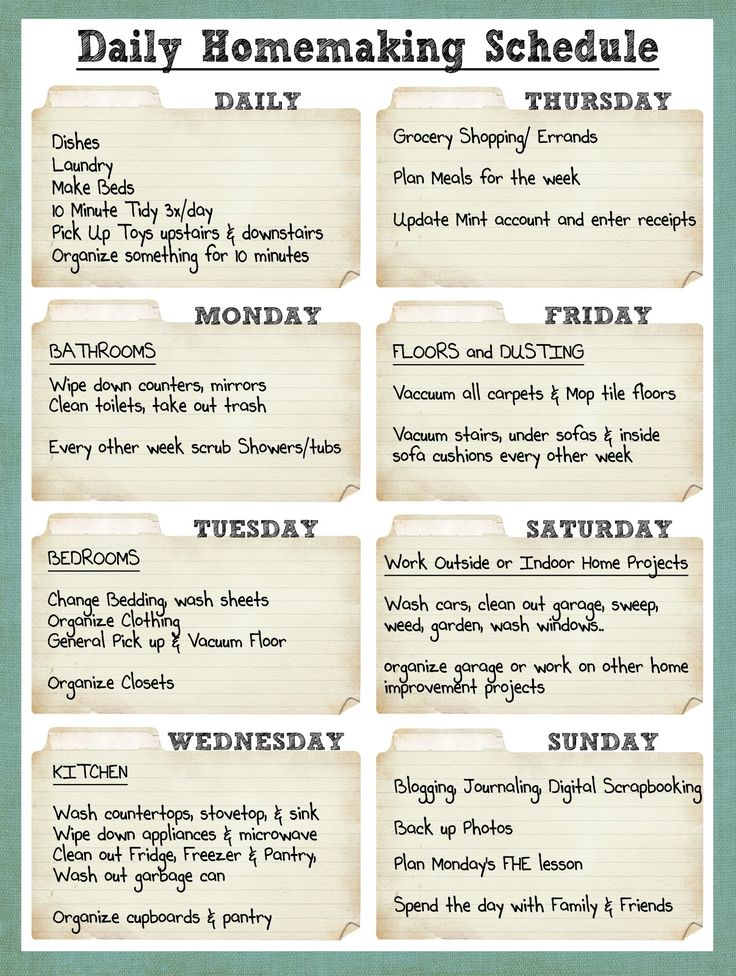 In terms of compiling the daily routine, we are most interested in circadian rhythms - cyclic fluctuations in the intensity of various biological processes associated with the change of day and night, the period of which is approximately equal to 24 hours [Komsomolskaya Pravda, 2016].
In terms of compiling the daily routine, we are most interested in circadian rhythms - cyclic fluctuations in the intensity of various biological processes associated with the change of day and night, the period of which is approximately equal to 24 hours [Komsomolskaya Pravda, 2016].
Many researchers, until recently, attributed the study of biorhythms to a non-academic area of physiology, but thanks to recent research, the situation has changed somewhat. So, in the human brain, they found a tiny cluster in the hypothalamus, about 20,000 neurons in size, which controls many of the body's circadian rhythms. Known as the suprachiasmatic nucleus (SCN), this center performs the work of the body's internal pacemaker and affects human biorhythms [Moore R. Y., 2001].
Owls and larks
Psychologists often refer to the well-known division of people depending on the period of their activity into "owls" and "larks". It is difficult for the first to get up early in the morning, and the peak of their activity falls on the evening and night hours.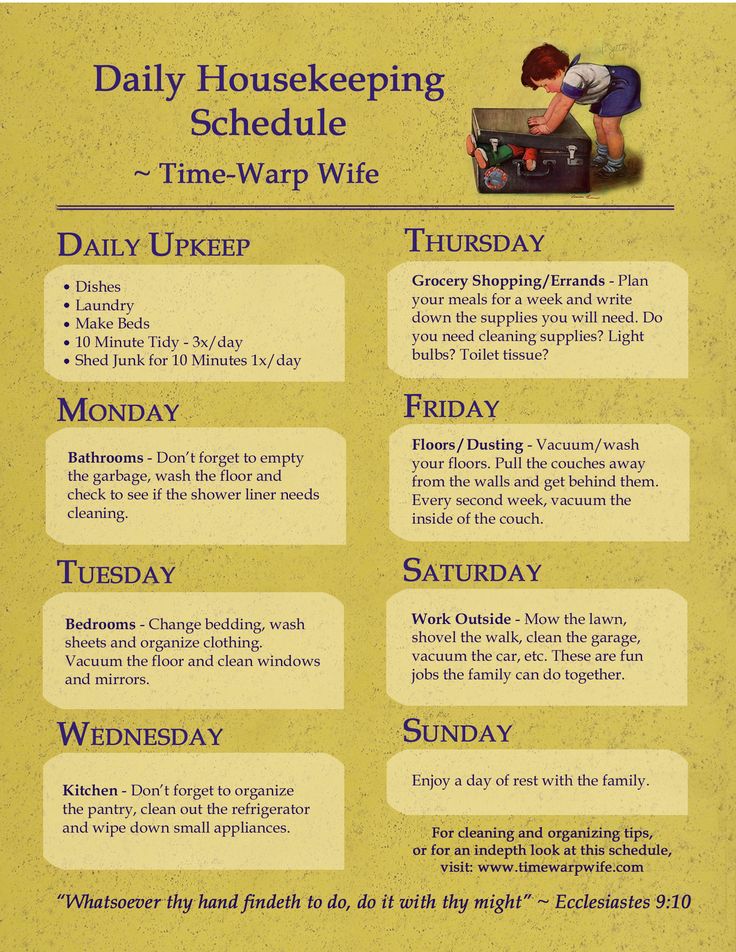 The latter, on the contrary, are active in the morning, and by the evening they quickly lose their energy reserves. Interestingly, in many African countries there are practically no “owls”, this is due to the fact that many villages and cities are not electrified, which means that when the sun sets, local life stops.
The latter, on the contrary, are active in the morning, and by the evening they quickly lose their energy reserves. Interestingly, in many African countries there are practically no “owls”, this is due to the fact that many villages and cities are not electrified, which means that when the sun sets, local life stops.
The proposed classification is rather arbitrary, because, as practice shows, a normal healthy person, if desired, can gradually change his type of wakefulness without harm to the body. The main thing is the presence of willpower and the right strategy.
For example, many politicians, businessmen, athletes who travel a lot around the world often have to adjust their circadian rhythms in accordance with the time difference between cities in order not to lose efficiency in their work when changing time zones. In practice, even special recommendations have been developed that will help to rebuild your regime as painlessly as possible after changing the time zone. For this you are follows:
For this you are follows:
| 1 | Plan the first days of arrival in such a way that, if possible, psychological and physical stress are minimal. |
| 2 | Eat only light meals two days before the flight, avoid alcoholic beverages and foods that are unusual for you, and refrain from smoking if possible. |
| 3 | Please note that it is better to fly from east to west on a morning or afternoon flight, and from west to east - in the evening. |
| 4 | 3-5 days before departure, gradually rebuild your schedule in accordance with the time zone of the place where you are going to fly. |
| 5 | If you're flying west, try to go to bed and wake up later. When traveling eastward, you need to fall asleep earlier and wake up early in the morning. |
Often people do not even have to use their willpower to change their activity regime, since the human body is able to independently adapt to changing external conditions.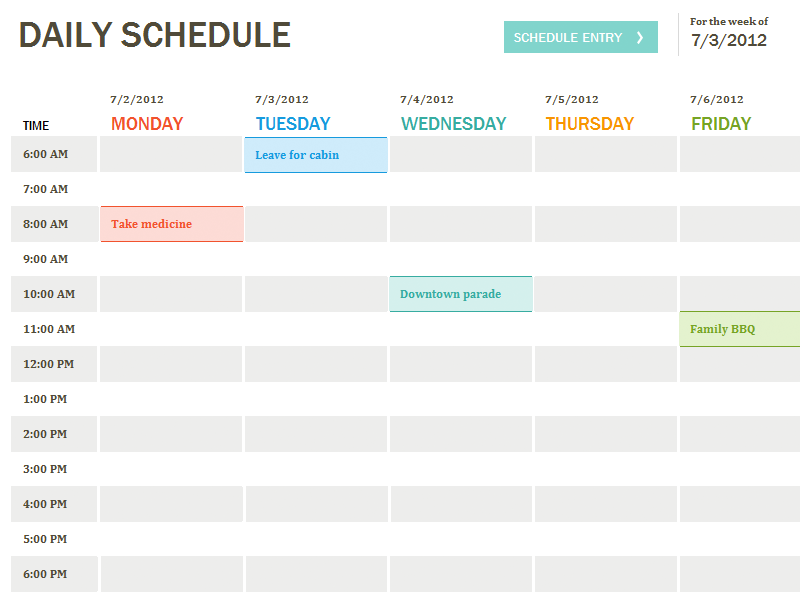 For example, regular schoolchildren tend to go to class by 8:30 a.m. during a long period of study. Over the years, the student's body gets used to follow the given circadian rhythm, that is, to work actively in the first half of the day. However, if, after graduation, a graduate enters the university in the evening department, where classes are held on the second shift, the body has to adjust to the new schedule. Over time, the student's biological clock naturally adapts to the new system without much effort on his part.
For example, regular schoolchildren tend to go to class by 8:30 a.m. during a long period of study. Over the years, the student's body gets used to follow the given circadian rhythm, that is, to work actively in the first half of the day. However, if, after graduation, a graduate enters the university in the evening department, where classes are held on the second shift, the body has to adjust to the new schedule. Over time, the student's biological clock naturally adapts to the new system without much effort on his part.
Knowing how the biological clock works will help you plan your day correctly. Below is an approximate calculation of the periods of activity of different systems of an average person by hours:
04:00. The beginning of the circadian rhythm. At this time, the body releases the stress hormone cortisol into the bloodstream, which triggers the mechanisms of basic functions and is responsible for our activity. It is this hormone that helps wake up people who prefer to get up early.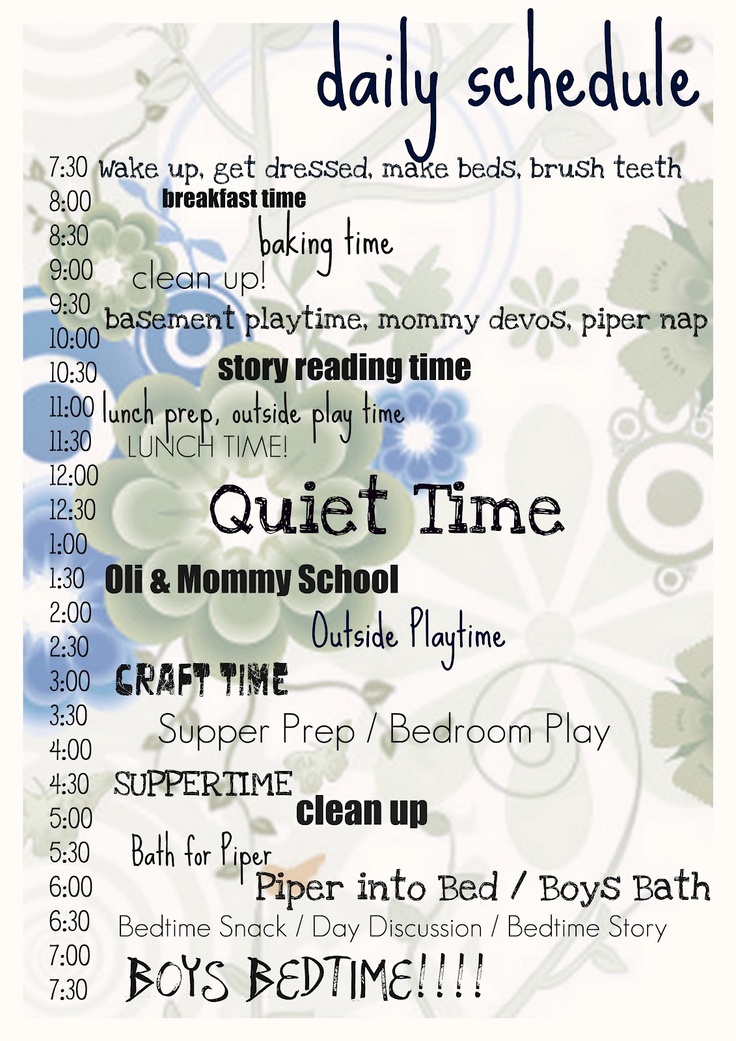
05:00-06:00. Awakening of the organism. During this period, the metabolism accelerates, the level of amino acids and sugar increases, which do not allow a person to sleep soundly in the morning.
07:00-09:00. The ideal time for light physical activity, when you can quickly bring the body relaxed after sleep into tone. At this time, the digestive system works well: the absorption of nutrients occurs faster, which helps to efficiently process food and convert it into energy.
09:00-10:00. The period when the energy received from eating is mastered. During this time, a person is able to cope well with tasks for attention and intelligence, as well as successfully use short-term memory.
10:00-12:00. The first peak of efficiency, the period of maximum mental activity. At this time, a person copes well with tasks that require increased concentration.
12:00-14:00. Deterioration time, when it is necessary to rest the tired brain.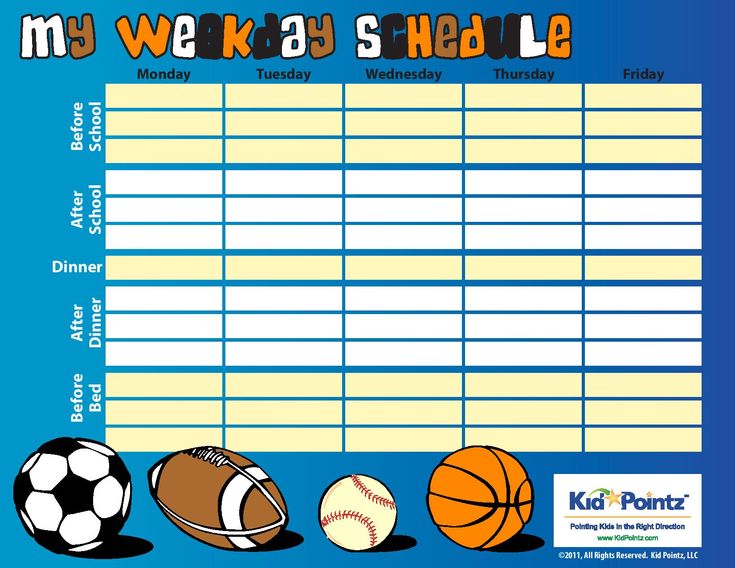 This period is suitable for a lunch break, as the work of the digestive tract accelerates, blood flows to the stomach, and the mental activity of the body decreases.
This period is suitable for a lunch break, as the work of the digestive tract accelerates, blood flows to the stomach, and the mental activity of the body decreases.
14:00-16:00. It is better to devote this time to the calm digestion of what you have eaten, as the body is in a state of slight fatigue after dinner.
16:00-18:00. The second peak of activity and performance. The body received energy from food, all systems again work in full mode.
18:00-20:00. The best time for dinner, the food received by the body will have time to digest until the morning. After eating, you can take a walk or after an hour to do physical exercises, go to training.
20:00-21:00. This time is suitable for playing sports, visiting sections, socializing.
21:00-22:00. The period when the ability of the brain to memorize increases. At this time, eating is not recommended.
22:00. Start of the sleep phase. Recovery processes are launched in the body, hormones of youth are released.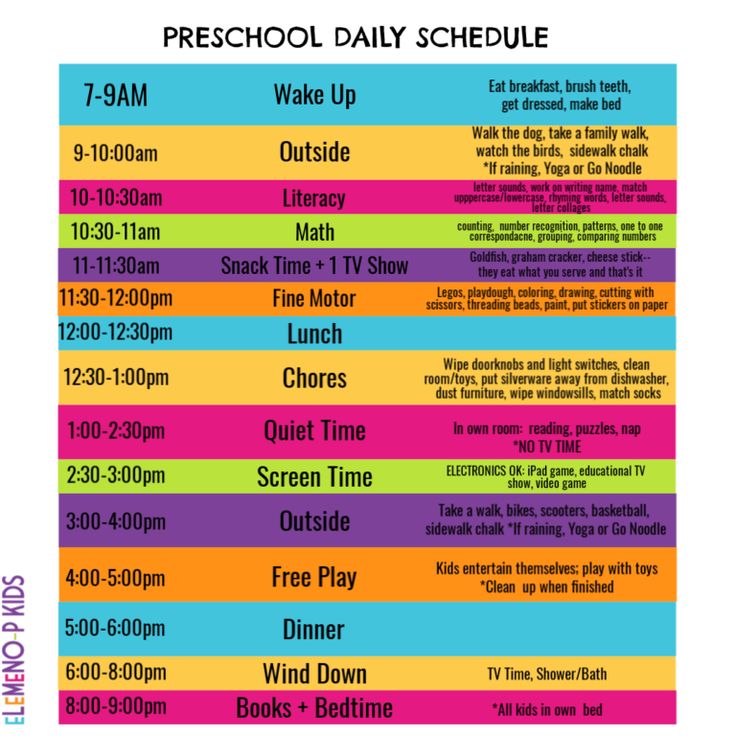 The body goes into a state of rest.
The body goes into a state of rest.
23:00-01:00. At this time, the metabolic process slows down as much as possible, body temperature and pulse rate decrease. The deep sleep phase is when our body is at its best resting.
02:00-03:00. The period when all chemical reactions are slowed down, hormones are practically not produced. Lack of sleep at this time can lead to a deterioration in condition and mood throughout the day.
Note: in the cold season there is a slight shift of the described processes of physiological activity forward in time.
Lark or Owl Test
We invite you to take a test to determine whether you are an owl, a lark or a dove. This can help you determine what time of day you are most productive and adjust your daily routine accordingly.
Statistics Full screen
Components of the daily routine
We have already said that it is impossible to offer a universal daily routine that would suit everyone. When drawing up a schedule, many personal factors are taken into account, but there are also points that everyone must follow. These are necessary conditions for everyone who wants to lead a healthy lifestyle and be healthy.
When drawing up a schedule, many personal factors are taken into account, but there are also points that everyone must follow. These are necessary conditions for everyone who wants to lead a healthy lifestyle and be healthy.
1
Sleep
The realities of the modern world are such that many people either do not get enough sleep or regularly sleep more than the body needs. In both cases, this negatively affects the physical condition of a person and his activities. A clear daily routine and the right time for sleep allow all human life support systems to recover and relax, and also help to avoid sleep and nervous system disorders [MedicalNewsToday, 2019, Ho L., 2020].
So, the ideal time for sleep is the period from 11 pm to 7 am [Healthline, 2019]. On average, an adult should sleep about 7-8 hours a day, although there are many cases when people slept much less (3-6 hours a day), but they felt great and did their job efficiently. Famous successful sleep-deprived people include Julius Caesar, Leonardo da Vinci, Benjamin Franklin, Napoleon Bonaparte, Thomas Jefferson, Salvador Dali, Nikola Tesla, Thomas Edison, Winston Churchill and Margaret Thatcher.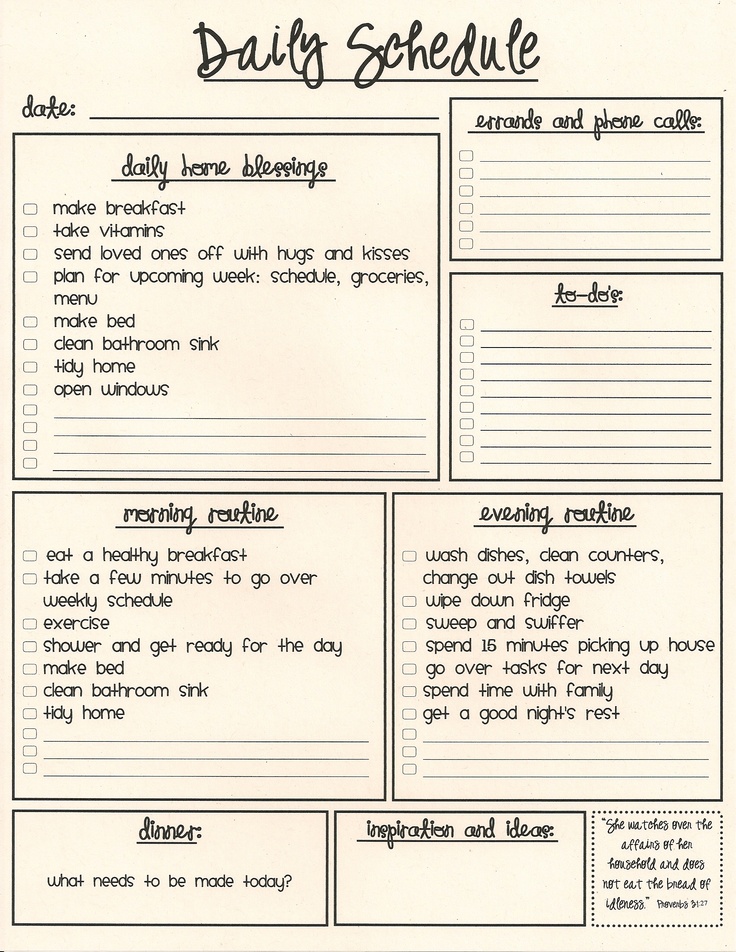
However, one should not resort to extreme cases and neglect healthy sleep altogether. In some clinical experiments, isolated cases were observed when people did not sleep for more than 250 hours in a row. By the end of this period of time, doctors noted in patients a disorder of attention, the inability to focus on an object for more than 20 seconds, and psychomotor impairment. Such experiments did not bring much harm to health, but they knocked the human body out of its usual state for several days.
For many people who want to straighten their schedule and learn how to go to bed early, the question of "how to fall asleep" at the scheduled time is relevant. Here are some recommendations:
- Instead of watching detective series on TV or surfing the Internet, it is better to read a book before going to bed.
- A few hours before bedtime, it is worth doing physical exercises, running, just walking.
- Do not eat heavy meals at night.

- Before going to bed it is useful to ventilate the room.
- In this way, make up your daily routine so that during going to bed the body feels tired.
Even if you can't fall asleep for a long time in the evening, you still need to get up at the scheduled time in the morning. You won't get enough sleep one day, but the next night you will be able to fall asleep earlier.
2
Meals
Everyone knows the phrase “to live, you need to eat”, but you need to eat right. We will talk in detail about proper nutrition and everything connected with it in the next lesson, here we will note only a few important nuances. Food is fuel for the body. With it, we get not only energy for the day, which is spent on mental and physical activity, but also provide the body with the necessary vitamins and minerals. That is why it is important to eat regularly and fully, the need for a diet must be agreed with a specialist who will help you create the optimal menu, taking into account the physiological needs of the body.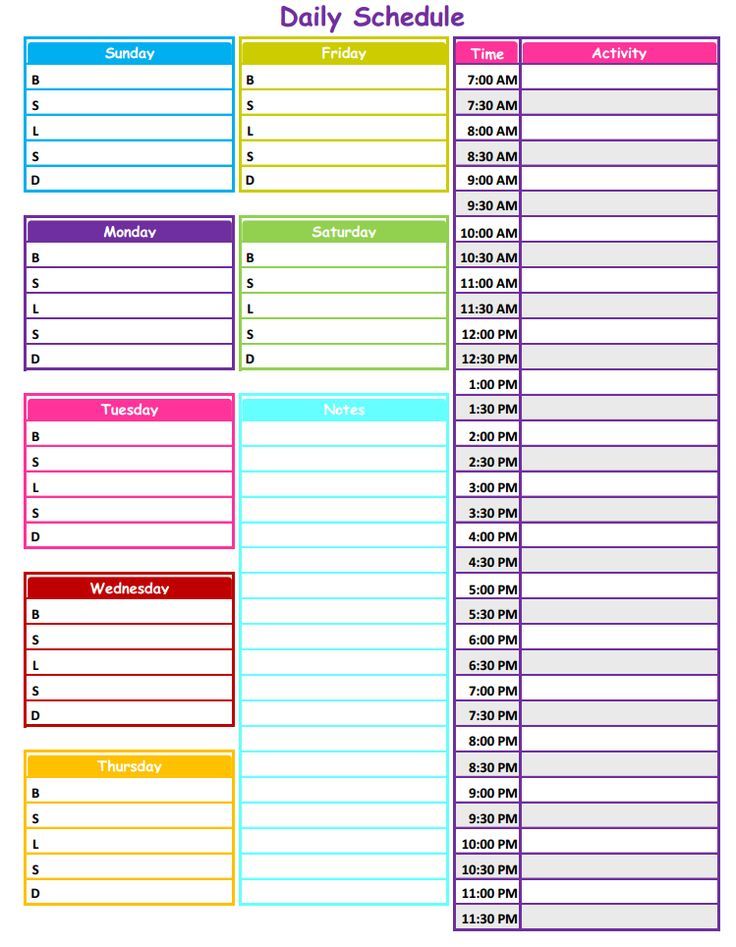
3
Rest
Restoration of strength and working capacity of the body occurs not only during sleep, but also during the period of activity of the body. During work, a person also needs rest, since it is impossible to constantly maintain a high level of working capacity. Don't waste your lunch break doing work, get some rest, and soon you'll be able to get back to work with renewed vigor and work more productively and efficiently.
After work, it is also important to rest. If you work at the computer all day, after returning home, spend the evening without it. Spend time reading, communicating with family and friends, self-education.
4
Work
Each of us has to work: schoolchildren go to classes and do homework, students attend lectures and seminars, prepare for exams, adults build a career and earn a living. The ability to plan your working time is an important part of the daily routine as a whole. Methods of self-management, time management, as well as recommendations for improving personal efficiency at work and outside of it, you can find in the articles in a special section of our blog “Time-management”.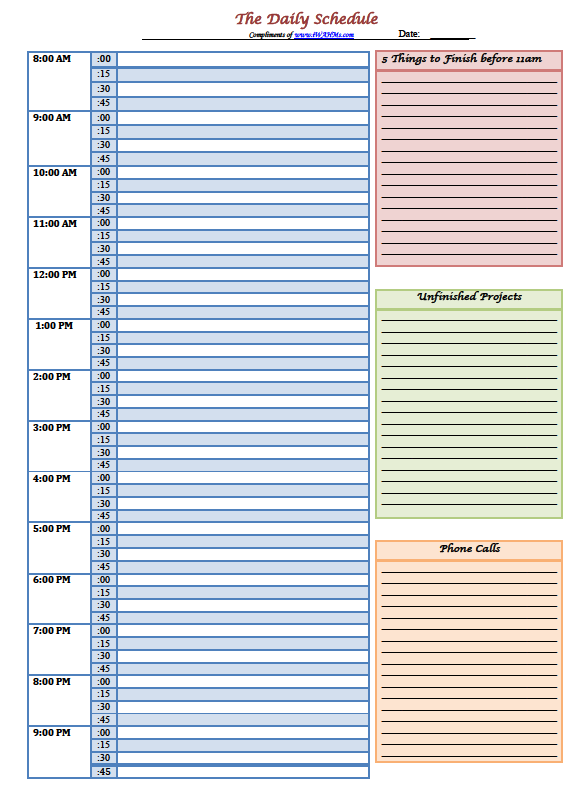
5
Physical activity
This is the recommended part of the day for everyone who cares about their health. First of all, you need to think about training for those whose work limits the motor activity of the body throughout the day. Even if you do not have the opportunity to sign up for a gym or go to the pool, you can work out at home or on playgrounds in yards and schools. If there are medical contraindications, instead of playing sports, you can practice light walks in the fresh air after eating. Read more about the role of physical activity in a healthy lifestyle in this lesson.
6
Mental balance
As they say, “a healthy mind in a healthy body”, but the opposite is also true. If a person is calm and satisfied with life, enjoys work, it means that it is easier for him to observe the daily routine. To understand ourselves, we made a special course "Self-Knowledge", which will allow you to understand yourself, to understand your strengths and weaknesses.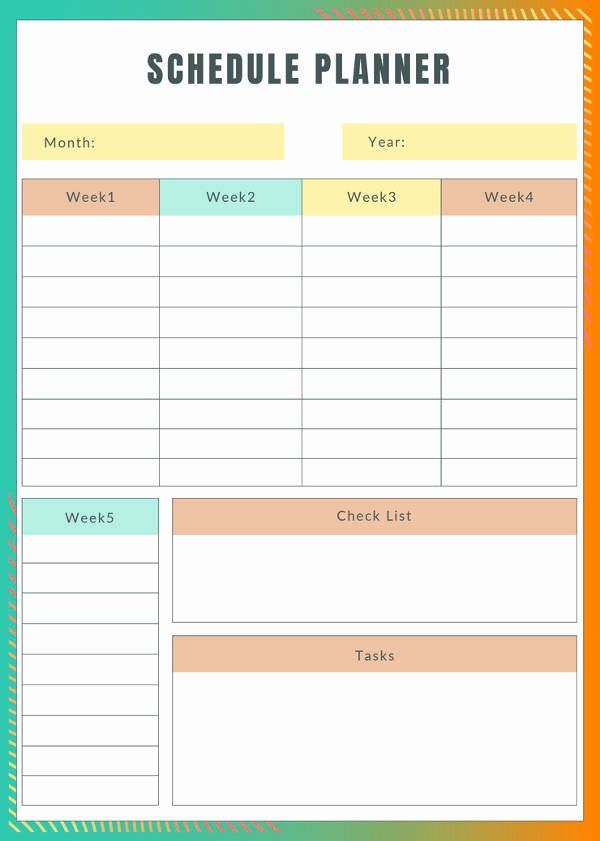 Find out more.
Find out more.
How to plan your daily routine0010, posted by him in his "Autobiography":
(the image is based on a fragment of the book by M. Curry)
Below are some recommendations for compiling your daily routine.
How to create a daily routine for an adult
When compiling a daily routine, focus on the following points:
| 1 | Try not only to think over the schedule, but also write it down. Use special programs, a diary, or simply write it down on a piece of paper. A written daily routine will not only remind you of business, but also serve as a silent reproach if any of the planned is not fulfilled. |
| 2 | It is important that at first only what you really do during the day is included in the regimen. Simply put, it’s worth adding items to the schedule that you will definitely complete, for example, get up at 7 to get ready, have breakfast and, given the road, be at work by 9. 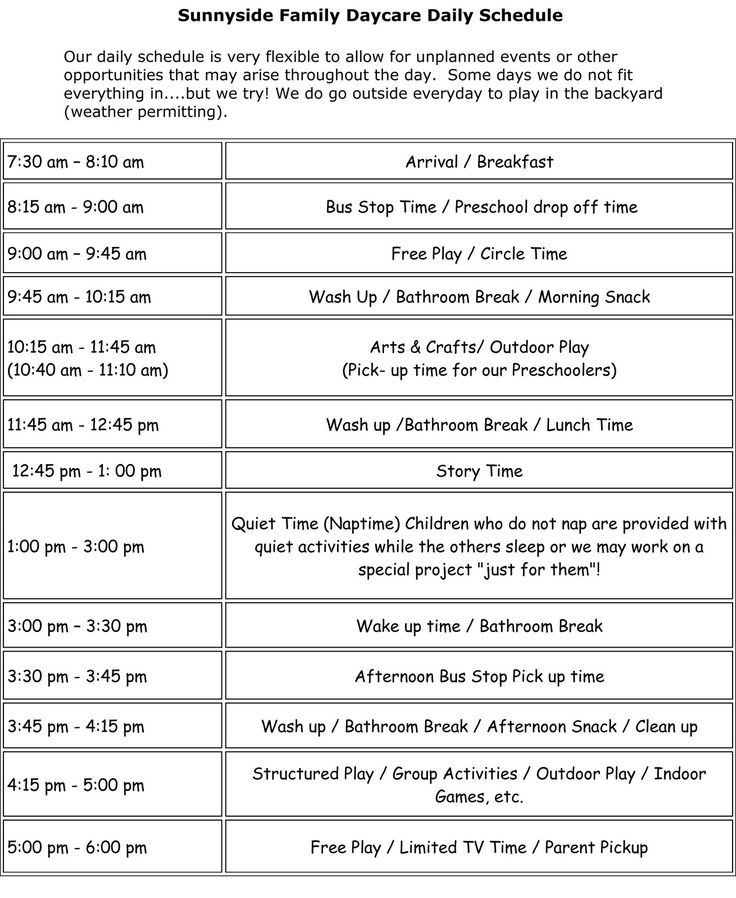 If you only want to go to the gym after work, but have never done it before, you should not include such an item in your daily plan. Later, when the idea can be realized, the regime can be adjusted. Remember that you can train yourself to follow the routine, and, therefore, self-discipline, only by completing the real items of the schedule. If you only want to go to the gym after work, but have never done it before, you should not include such an item in your daily plan. Later, when the idea can be realized, the regime can be adjusted. Remember that you can train yourself to follow the routine, and, therefore, self-discipline, only by completing the real items of the schedule. |
| 3 | In different components of your regime (primarily for work), rank tasks. Put the difficult tasks at the beginning and do them in the same order. |
| 4 | Try to take into account the physiological needs of your body, which were mentioned above. Observe personal hygiene, do not stay up late, eat at the same time. |
| 5 | It is also important that a few days after the decision to start compiling the regimen, you begin to mark the time intervals spent on certain actions. Print the average of how long it takes you to have breakfast, get to work, answer emails, communicate with colleagues, and so on. 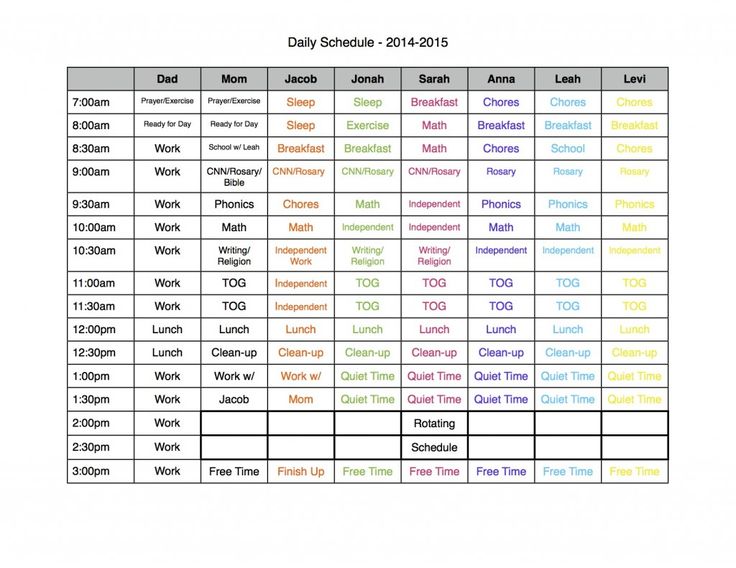 Based on the data obtained, you need to draw up the first regimen of the day. The use of the characteristic "first" is not accidental - in the future, most likely, you will repeatedly adjust your regimen, and it is important to learn during this process to rely on specific time frames, and not on subjective feelings of the time spent. Based on the data obtained, you need to draw up the first regimen of the day. The use of the characteristic "first" is not accidental - in the future, most likely, you will repeatedly adjust your regimen, and it is important to learn during this process to rely on specific time frames, and not on subjective feelings of the time spent. |
It is obvious that the daily routine is compiled in accordance with employment at work, which is more or less defined. Nevertheless, it is important to plan not only working time, but also rest, time for household chores and other things. This is sometimes difficult to do, but over time you will learn.
How to create a daily routine for a schoolchild (teenager)
Here, too, there are several highlights :
| 1 | The first thing to start with is the “field stage”. Some time needs to be spent on observation: how long does it take to get to school, to the section, prepare homework, etc. 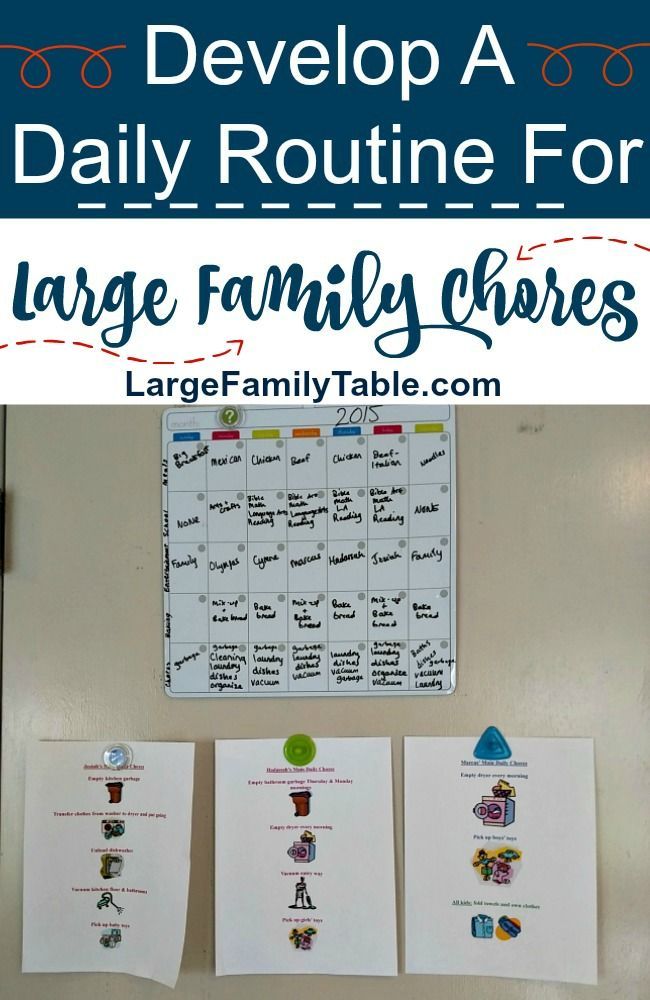 If the student makes up his own regimen, the data obtained must be agreed with the parents, who will help take into account the characteristics of age and allocate sufficient time for rest . If the student makes up his own regimen, the data obtained must be agreed with the parents, who will help take into account the characteristics of age and allocate sufficient time for rest . |
| 2 | School education is built taking into account pedagogical, psychological methods, nuances of age. The number of lessons, electives are given in such a volume so as not to overload the student. But rest time must be planned separately.
|
| 3 | It is unacceptable to spend most of your free time watching TV or playing computer games. This problem is solved by enrolling in sections and circles, fulfilling household chores assigned by parents, and other more useful things. |
| 4 | It is important to motivate the child to fulfill the daily routine at first. It all depends on the parents. |
| 5 | For elementary school students, it is imperative to set aside time for daytime sleep. 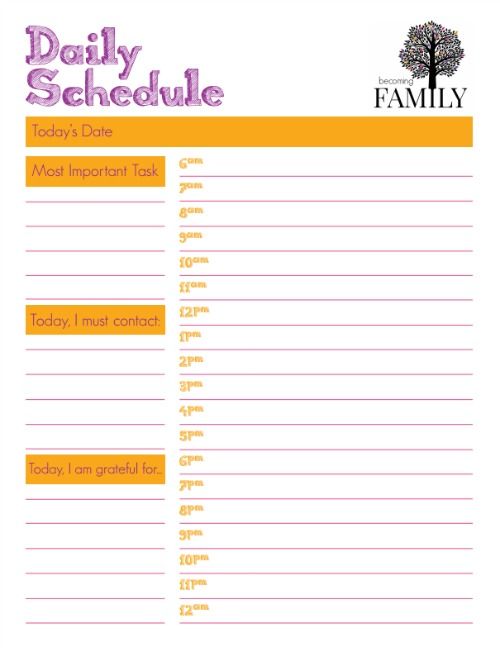 High school students can go to bed a little later, as well as independently make adjustments to their schedule in accordance with employment. For the preparation of written homework, the interval between 16.00 and 18.00 is best suited. It is better to read books and textbooks in the evening. High school students can go to bed a little later, as well as independently make adjustments to their schedule in accordance with employment. For the preparation of written homework, the interval between 16.00 and 18.00 is best suited. It is better to read books and textbooks in the evening. |
Below is one of the pediatrician-approved hourly routines for a Grade 3 student:
- 7:00. Lift.
- 7:00-7:30. Charging, washing.
- 7:30-7:45. Breakfast.
- 8:30-13:05. Classes at school.
- 13:30-14:00. Lunch.
- 14:00-15:45. Outdoor games, walks, outdoor activities.
- 15:45-16:00. Afternoon snack.
- 16:00-18:00. Self-training, homework.
- 18:00-19:00. Free time, rest.
- 19:00-19:30. Dinner.
- 19:30-20:00. Free time, housework.
- 20:00-20:30.
 Evening walk.
Evening walk. - 20:30-21:00. Getting ready for bed.
- 21:00. Sleep.
And finally, one more option.
How to create a daily routine for a student
The following recommendations will help to create a daily routine for a student :
| 1 | Start by collecting and analyzing information about the time spent. If the daily routine was drawn up while studying at school, then nothing will change dramatically in the daily routine of a full-time student. |
| 2 | Compared to schoolchildren, students often increase the amount of information received and the time for self-training. It is worth considering at the same time that mental activity should alternate with physical and outdoor activities - to maintain health, these items should not be excluded from the schedule. |
| 3 | The activity of a student is associated with a constant tension of mental forces, and in order to use them fruitfully, one must remember not only the alternation of work and rest, but also some other features.  You need to enter the work gradually, first repeating already known material and only then starting to learn new things. You need to enter the work gradually, first repeating already known material and only then starting to learn new things. |
| 4 | The mode of the day for the session must be compiled separately. Preparation should begin at the same time intervals as couples take place throughout the semester - the brain is already used to being active at such a time. Particular attention should be paid to food and rest. |
| 5 | A properly designed and thought out daily routine, no matter how difficult it may be to stick to at first, will soon lead to the development of a dynamic stereotype, which will make following the schedule easier. |
Polls and observations show that those students who make up the daily routine have up to 5 hours of free time for personal interests. Following the routine will allow you to maintain a healthy balance in your activities: not to spend all the time on “cramming”, on the one hand, but also not to walk, constantly sleeping off in pairs, on the other.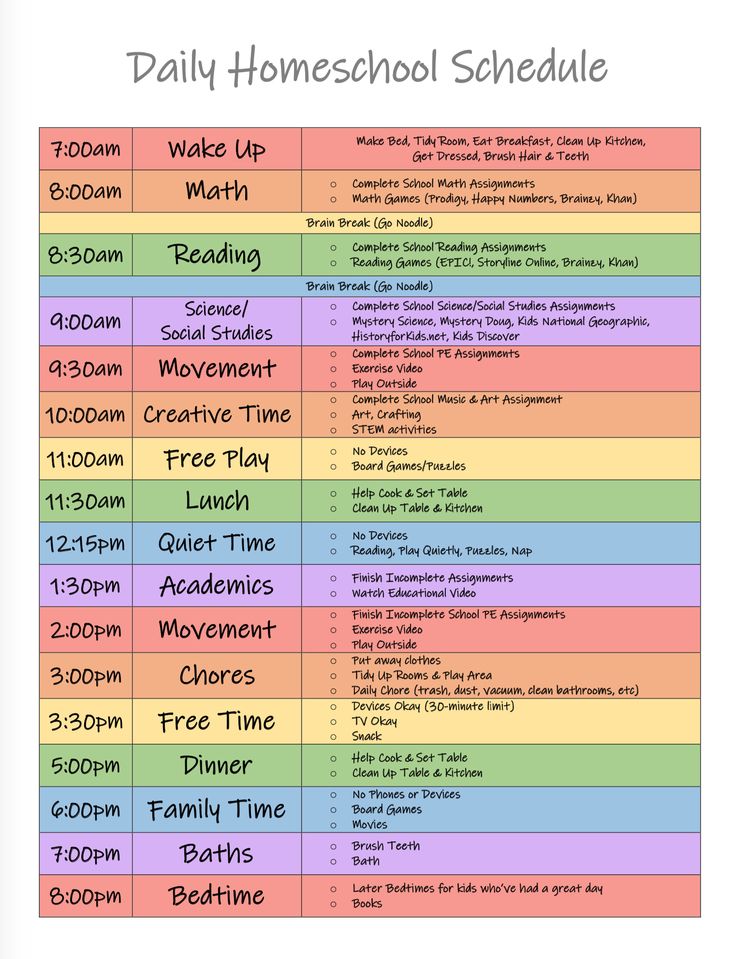
Test your knowledge
If you want to test your knowledge of the topic of this lesson, you can take a short test consisting of several questions. Only one answer can be correct for each question. After you select one of the options, the system automatically moves on to the next question. The points you receive are affected by the correctness of your answers and the time spent on passing. Please note that the questions are different each time, and the options are shuffled.
Statistics Full screen
And then let's talk about proper nutrition.
Sergey Krutko
← Introduction to healthy lifestyle 2 Proper nutrition →
developed the perfect daily routine to get enough sleep and not get tired
Komsomolskaya Pravda
Health Healthy: Help yourself
Elena Ionova
9000 12 12 12 12 August 2016 17:10Scientists have painted a model of super-mode on bioclock and urge us to have sex at seven in the morning and buy shoes at seven in the evening [+ advice from our experts for owls and larks]
A person, like all living things, depends on biorhythms - seasonal, weekly and daily. Photo: Oleg RUKAVITSYN
Photo: Oleg RUKAVITSYN
Do you feel tired, barely dangling your legs from the bed, after dinner you feel sleepy, and in the evening your head is cast iron? Perhaps the problem is that you have entered into conflict with your internal clock.
After all, a person, like all living things, depends on biorhythms - seasonal, weekly and daily. And we, thanks to progress, do everything at the wrong time - we eat, sleep and even make love. German sleep doctor Karl Pflugbell developed a regimen model called biotopping and aligned the to-do list with the human internal clock. And experts from Harvard supplemented this model with new research.
So, we solve problems and buy shoes - strictly by the hour:
6.00-7.00 am. The biological “alarm clock” is triggered, which pushes all the body systems apart. The metabolism is activated. The level of sugar and amino acids jumps. An excellent time for physical activity is not for strength exercises, but aimed at enriching organs with oxygen.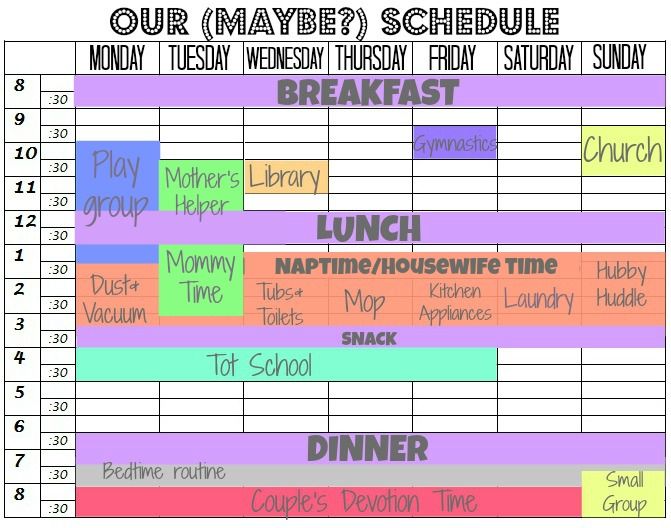 Simply put, you need to disperse the blood. You can do "production gymnastics", but there is something more interesting.
Simply put, you need to disperse the blood. You can do "production gymnastics", but there is something more interesting.
It's time to make love! Doctor of Neurology Pam Spoor sure: morning sex is more beneficial for the body than night caresses. Indeed, in the dawn hours there is a significant release of hormones, including sex hormones. And in the evening, our hormonal system is already sleepy, and the effect is not at all the same. It's up to the small thing - to push your soul mate at such an early hour.
7.30-8.00 am. Have breakfast. You can even have a piece of bacon and a bun. Calories from an early breakfast are almost completely taken by the brain, which is starving for the night (you know how much energy it takes to “translate” dreams for us and prevent equipment!). It is believed that only those fats and carbohydrates that enter the body after 12 days settle at the waist.
8.00-8.15 am . If you are taking vitamins or mineral complexes - it's time to drink them.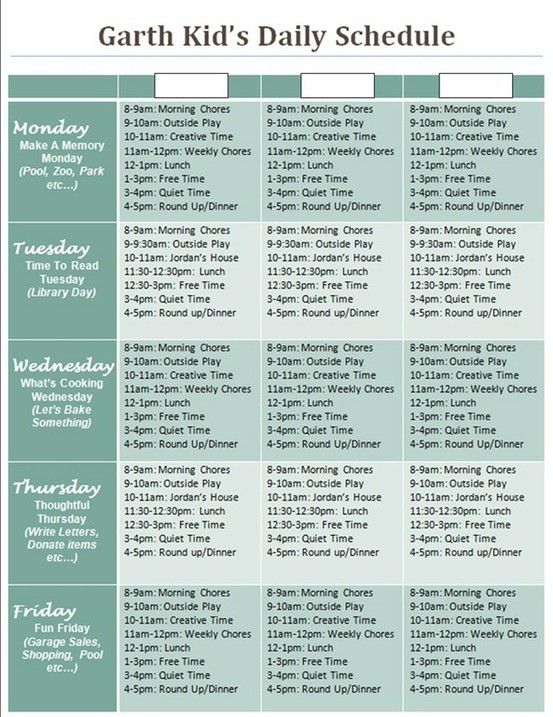 Some of them, including B vitamins, also act as stimulants. So it is better to take them in the morning. But not on an empty stomach, otherwise they will be processed too quickly and excreted in the urine.
Some of them, including B vitamins, also act as stimulants. So it is better to take them in the morning. But not on an empty stomach, otherwise they will be processed too quickly and excreted in the urine.
8.30-10.00 . Set aside some time for sunbathing. At least stand on the balcony or go through the stop on foot. It does not matter if the day is overcast: ultraviolet penetrates through the clouds. And without it, vitamin D is not produced, which is very necessary for mood, bones and teeth.
10.00-11.00 am. Deal with problems! At this time, the brain is especially tuned for decision making. The left hemisphere, responsible for logic and cold calculation, works more actively.
13.00 –13.30. Optimum time for lunch. The digestive system is working at full capacity. Food will not fall like a stone on the stomach, but will make its way, bringing you only pleasant satiety.
13.30-14.00. At this time, our body is the least sensitive to pain.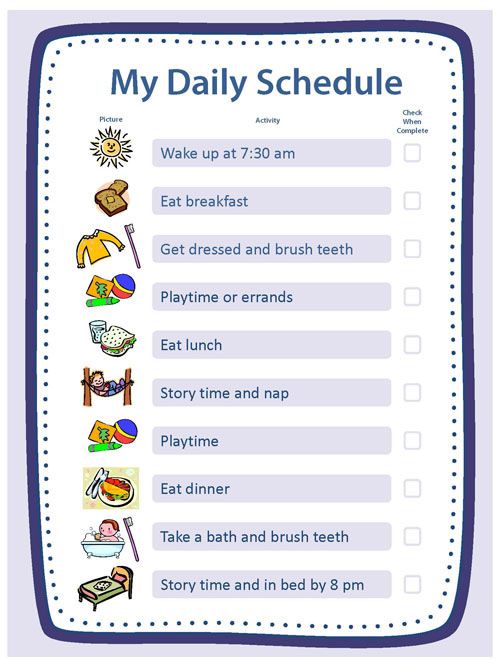 So feel free to sign up to the dentist! There is a decrease in the activity of all body systems. If possible, devote this hour to quiet work that does not require brainstorming.
So feel free to sign up to the dentist! There is a decrease in the activity of all body systems. If possible, devote this hour to quiet work that does not require brainstorming.
But at the same time, the body is vulnerable to everyday stress. So try not to make a fuss, otherwise the echoes of hassle will haunt you all day.
15.00–16.00. Take a walk. This will avoid drowsiness in the following hours until the evening. If you can’t sneak away from work, just walk along the corridors, stairs, give work to your legs.
16.00-18.00. Great time for sports. Many people think that it is better to go to the gym in the morning. But recent studies show that the production of hormones and proteins that protect the heart and muscles from damage, which are optimal for fitness, is formed closer to five or six in the evening. Training at this time will be more productive and less traumatic.
18.00–19.00. Let's go shopping! Especially for shoes.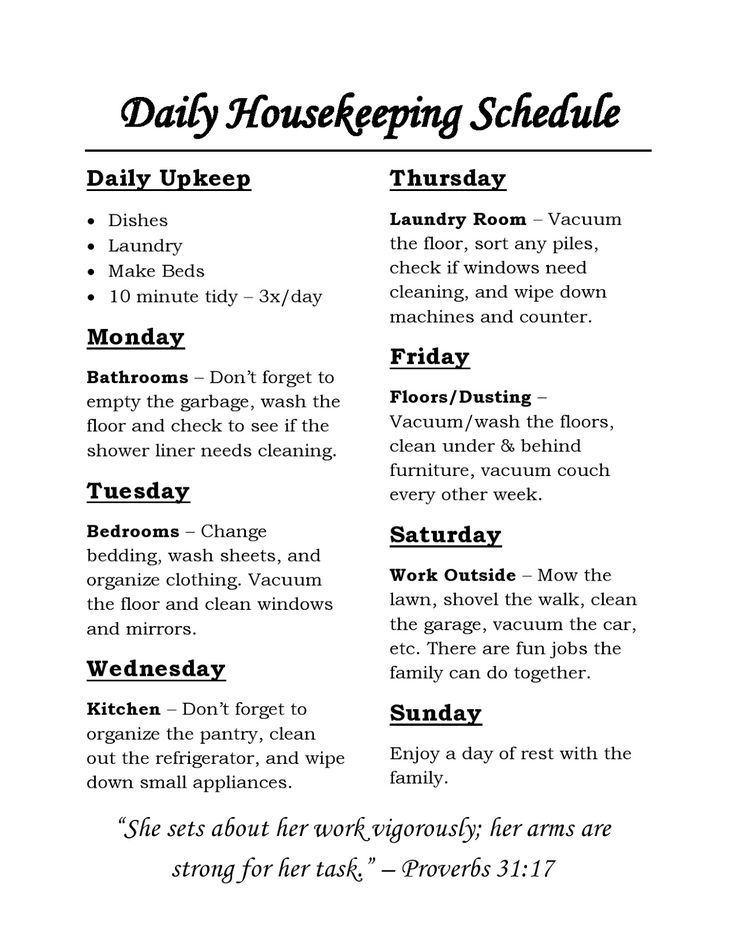 Scientists have found that by this time of day the leg can increase by one size (earth gravity “drives” fluid to the foot). But the shoes bought in the morning may not be suitable for everyday wear - they will reap.
Scientists have found that by this time of day the leg can increase by one size (earth gravity “drives” fluid to the foot). But the shoes bought in the morning may not be suitable for everyday wear - they will reap.
In the same period of time, our body temperature is the highest - about 36.9 degrees per day - almost 1 degree higher than at 3 in the morning. If you are healthy, from now on it will gradually decrease to, but if you have a cold, it will rise.
The pulse becomes 5-10 beats less frequent, the activity of the central nervous system decreases. The body at this time is especially sensitive to the effects of drugs. Check the dosage carefully. And then, for example, an extra aspirin tablet can cause stomach irritation.
19.00–20.00. Time for a light dinner and a glass of wine. At this time, the liver produces a maximum of enzymes. This allows her, without much straining, to neutralize the negative effects of alcohol and digest fried and fatty foods.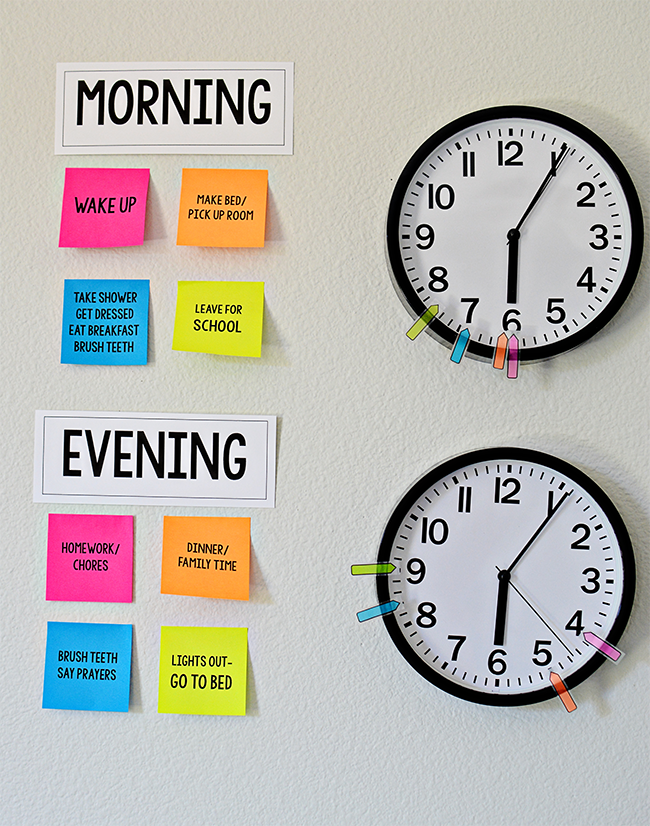
21.30–22.30 . Get ready for sleep. Do some quiet household chores, take a bath. An hour before bedtime - no talking on the phone, sitting at the computer and, moreover, scandals. An hour before bed determines the mood and well-being in the next day.
BTW
What happens at night?
Midnight. Our body does not turn off at all. For example, skin cells begin to divide faster - it is at this time that wounds heal. The immune system attacks the foci of infection. There is a "self-repair". And it is better not to interfere with the body in this and not to distract it with active actions.
One in the morning. The early sleep phase begins. And for owls - the best period for active creativity.
Two nights. Increased sensitivity to cold. So don't leave the window open at night.
Three nights. The minimum level of production of the hormone melatonin, which is responsible, among other things, for our restful sleep and many mental reactions, including endurance.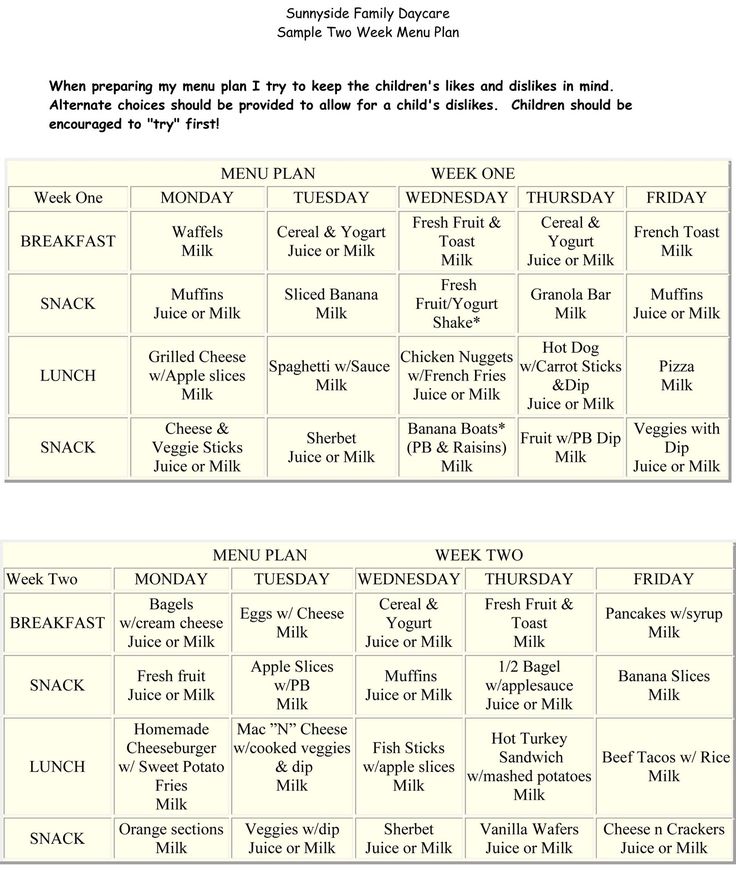 Those who often do not sleep at this time are 5 times more likely to suffer from depression and psychosomatic disorders (that is, diseases "from the nerves").
Those who often do not sleep at this time are 5 times more likely to suffer from depression and psychosomatic disorders (that is, diseases "from the nerves").
Four in the morning. The respiratory center is being reconstructed. Because of this, people with bronchial asma and cardiac ischemia can have an attack. The smooth muscles of the bronchi contract, the airways are maximally narrowed, it becomes difficult to inhale.
Five in the morning. Kidney activity is minimal. Throughout the night, they sent less and less urine to the bladder and removed less harmful substances. So if you often jump up to the toilet in the morning, then something is wrong with the genitourinary system.
Also, waking up at such an early hour and not being able to sleep afterwards can be a sign of depression.
EXPERT OPINIONS
Larks have a healthier heart I also judge by my patients: core patients, especially those with hypertension, begin to feel much better when they correct the regimen.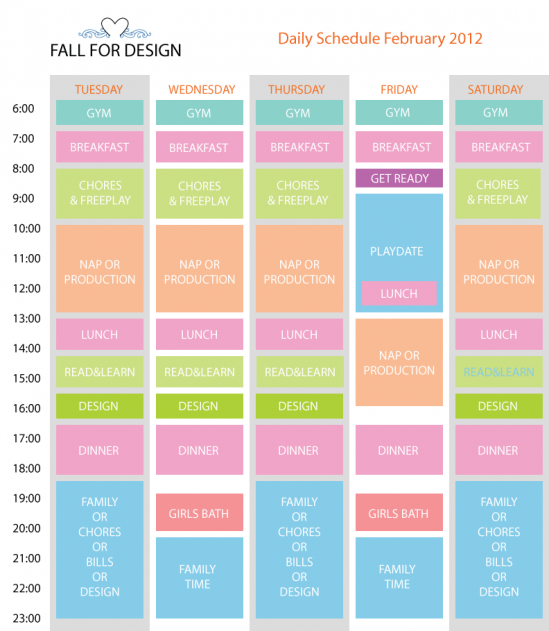 Those who get up at 7-8 in the morning have more stable pressure throughout the day, less likely to suffer from headaches. To the question of biorhythms. There is such a science - chronopharmacology. He studies taking medications by the hour, depending on the activity of hormones and different body systems. An interesting thing. For example, prescribing drugs that lower blood pressure at 20:00 and 22:00 has helped some patients reduce their daily dose by a quarter! But in each case, of course, you need to consult a doctor.
Those who get up at 7-8 in the morning have more stable pressure throughout the day, less likely to suffer from headaches. To the question of biorhythms. There is such a science - chronopharmacology. He studies taking medications by the hour, depending on the activity of hormones and different body systems. An interesting thing. For example, prescribing drugs that lower blood pressure at 20:00 and 22:00 has helped some patients reduce their daily dose by a quarter! But in each case, of course, you need to consult a doctor.
As for such early sex... It's a matter of taste. Although, as a cardiologist, I will say that it is really safer for the heart to make love in the morning, when vascular tension and blood pressure are lower than in the evening.
Don't torture the owls - feel sorry for the birds
Anatoliy German, family psychotherapist:
- Everyone's biorhythms are still individual. And attempts to create some kind of ideal model may be interesting in scientific terms, but in reality they can do a lot of harm.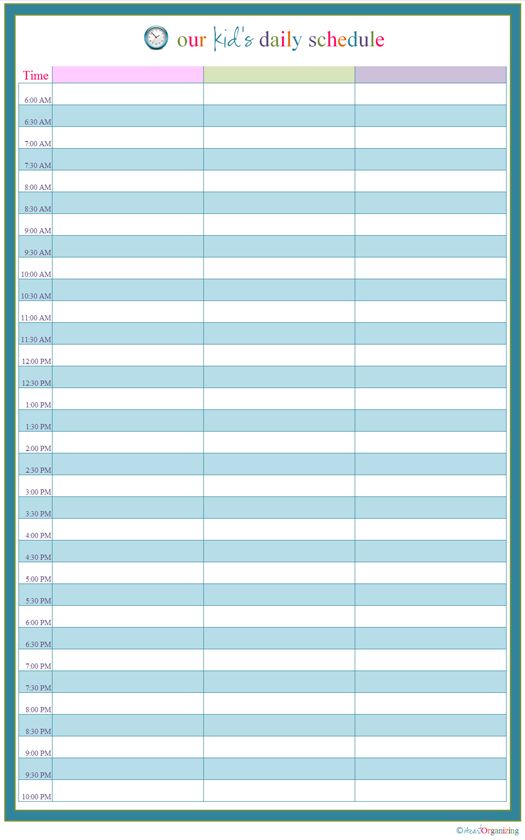 You can’t “break” people hard and make them jump up at 6 in the morning. It will bring nothing but weakness and depression. In my opinion, the main indicator of whether you should live in this mode is the harmony between the loads and your feelings.
You can’t “break” people hard and make them jump up at 6 in the morning. It will bring nothing but weakness and depression. In my opinion, the main indicator of whether you should live in this mode is the harmony between the loads and your feelings.
Do not force others to live in a mode that is comfortable for you. I have had patients on the brink of divorce because he is an owl, she is a lark. At first they swore wildly, then they got to the point that they lived in the same apartment, as it were, “in turn” - he lies down, she gets up. I had to tinker so that they understood that there was no need for ultimatums and attempts to "reforge" each other. You just need to spend together that part of the day when both are active. There are, of course, gross violations of biorhythms that need to be treated (for example, chronic insomnia or an exclusively nocturnal lifestyle). But in most cases, it is still safer to choose work for your own biorhythm than to commit violence against yourself.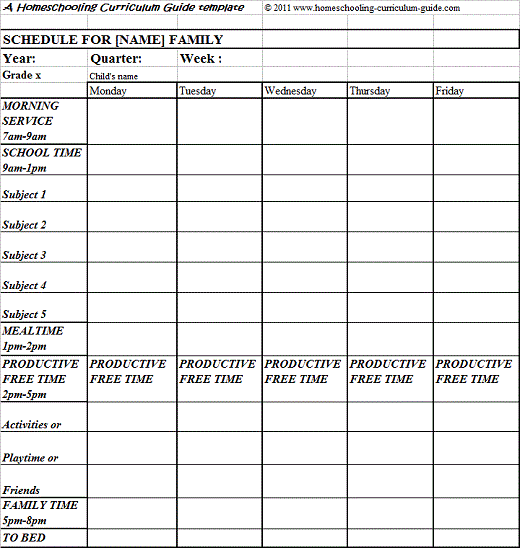
Age category of the site 18+
The online publication (website) is registered by Roskomnadzor, certificate El No. FS77-80505 dated March 15, 2021.
I.O. EDITOR-IN-CHIEF - NOSOVA OLESIA VYACHESLAVOVNA.
I.O. chief editor of the site - Viktor Fedorovich Kansky
Messages and comments from site readers are posted without preliminary editing. The editors reserve the right to remove them from the site or edit them if the specified messages and comments are an abuse of freedom mass media or violation of other requirements of the law.
JSC "Publishing House "Komsomolskaya Pravda". TIN: 7714037217 PSRN: 1027739295781 127015, Moscow, Novodmitrovskaya d. 2B, Tel. +7 (495) 777-02-82.
Exclusive rights to materials posted on the website www.kp.ru, in accordance with the legislation of the Russian Federation for the Protection of the Results of Intellectual Activity belong to JSC Publishing House Komsomolskaya Pravda, and do not be used by others in any way form without the written permission of the copyright holder.